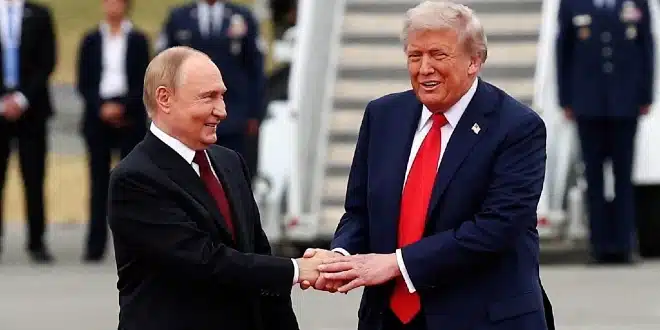The much-anticipated meeting between U.S. President Donald Trump and Russian President Vladimir Putin concluded on Saturday with a series of announcements that carry significant implications for the war in Ukraine. Despite widespread calls for a breakthrough, the summit produced no ceasefire and left many questions unresolved.
No Ceasefire Agreement
Ukrainian and European leaders had urged Trump to press Moscow for an immediate halt to hostilities. Instead, the summit leaned toward pursuing a comprehensive peace agreement rather than a temporary ceasefire.
Trump argued that “the best way to end the horrific war is to go directly to a Peace Agreement… and not a mere Ceasefire Agreement, which often times do not hold up.”
This approach was widely viewed as a diplomatic win for Putin, whose forces have recently made territorial gains in eastern Ukraine. During the summit itself, Russian forces launched 85 drones and a missile overnight, according to Kyiv, while Moscow claimed to have seized two additional villages in the region.
Trump Backs Away from Threats of Consequences
Before the meeting, Trump had threatened “severe consequences” should Putin refuse a ceasefire, raising expectations of new sanctions. U.S. lawmakers, including Senator Lindsey Graham, suggested the administration could consider tariffs of up to 500 percent on countries assisting Russia’s war effort.
However, after the talks, Trump appeared to soften his stance, telling Fox News that “because of what happened today, I think I don’t have to think about that now.” In contrast, European leaders reiterated that they would continue pressuring Moscow with sanctions until what they described as “a just and lasting peace” is achieved.
Territorial Questions Remain Unresolved
Kyiv’s greatest concern heading into the summit in Alaska was the possibility that Washington might pressure Ukraine into ceding occupied land. Roughly 20 percent of Ukrainian territory, including Crimea, is currently under Russian control.
According to officials briefed on the discussions, Trump signaled support for a proposal floated by Putin: Moscow would consolidate control over the Donetsk and Luhansk regions—together known as Donbas—while freezing the conflict lines in Kherson and Zaporizhzhia, where Ukrainian forces still hold key cities.
One source described this as a demand that Ukraine effectively “leave Donbas,” in return for Russia halting its offensive in the south.
Security Guarantees Still Vague
The joint Trump-Putin declaration made no mention of long-term security guarantees for Ukraine. Still, Trump reportedly told President Volodymyr Zelensky and European leaders that a NATO-style security arrangement could be considered—though this would fall short of granting Ukraine full NATO membership.
European leaders including France and the UK suggested they might contribute troops as part of a peacekeeping guarantee, but emphasized these forces would not be placed on the frontline.
Next Steps: Zelensky and Possible Three-Way Talks
Trump confirmed he would meet Zelensky in Washington on Monday, raising the prospect of a three-way summit with Putin at a later date. He also remarked that any final peace deal would “depend on Zelensky alone.”
However, Zelensky cast doubt on Moscow’s intentions, warning that Russia’s refusal to even discuss a ceasefire “complicates the situation” and raises doubts about its willingness to reach a sustainable peace.


